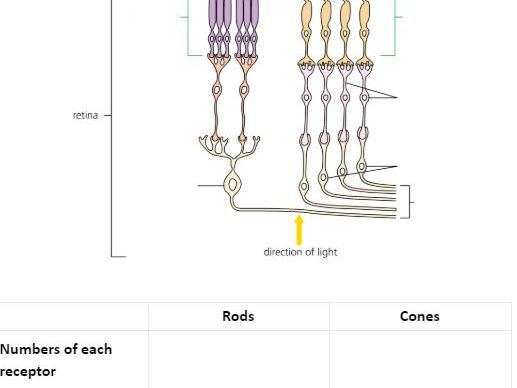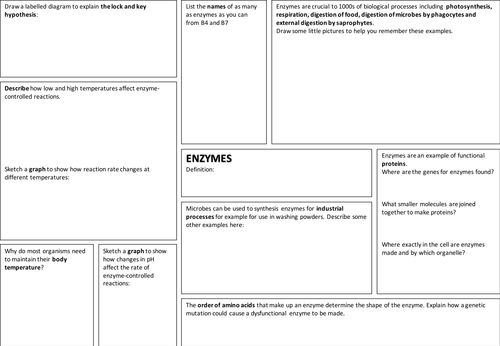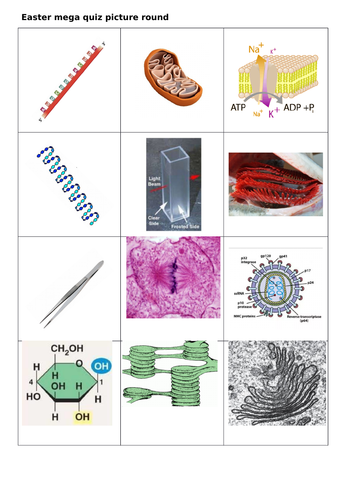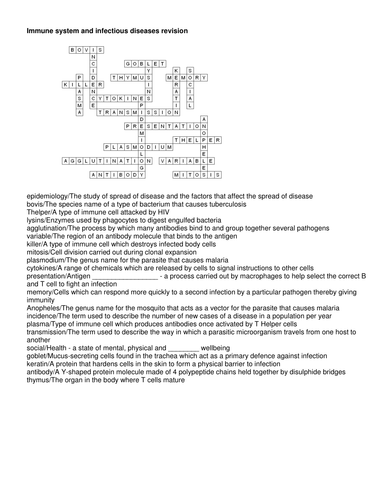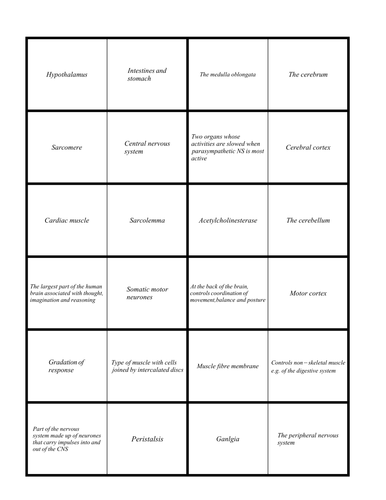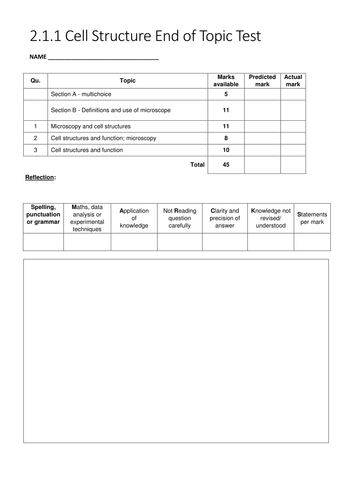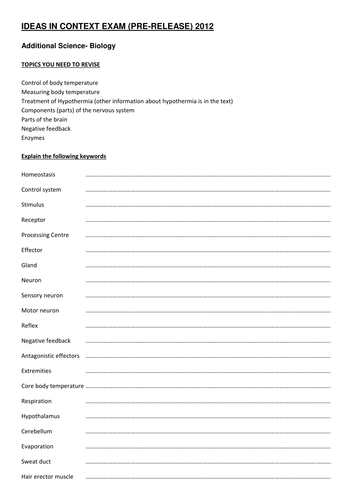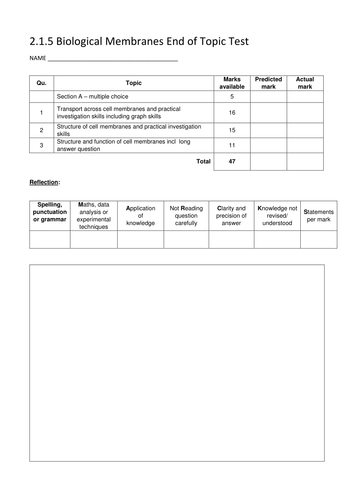
52Uploads
216k+Views
123k+Downloads
Biology

Synapses and Reflexes - A Level Biology (AQA)
Powerpoint for the teaching of synapses and reflexes at A Level.

Using the correct wording in A Level Biology
**UPDATED** with contributions from
@jk_graves.
A list of common statements given by students in Biology exams that do not get credit due to incorrect wording (based on my experience from OCR).
Get them to try and spot the mistake and then write the correct version.
Students always get frustrated because they have the right idea of what the correct answer should be but they do not state exactly as the examiner wants it.
Losing 4-5 marks this way can sometimes be a whole grade.
Sorry no answers - hopefully you can spot what's wrong!

Rods and Cones (light receptors) worksheet - A Level
Diagram for labeling and table to complete to compare the structure and function of rod cells and cone cells.
Students use textbook or information from the lesson to complete.

Gel electrophoresis - A Level Biology
Powerpoint for teaching about the principles and uses of gel electrophoresis in gene technologies.

Student guide to AS Biology (OCR)
A guide to give to students at the start of AS to help explain the expectations of the course and the level of work and organisation required from them.
It's only 4 pages as we're tight on photocopying budgets! I also wanted to include more info about the course, practical tips, standard units, latin roots of scientific words etc.

Ecology keywords wordsearch with clues
Wordsearch activity designed for Y9 iGCSE (edexcel) ecology, but could could also be used for KS3 and other exam boards. It’s easy to adapt if you want to tweak the definitions.
Comes with answers.
Students can either find words first and write them in the box, then match up with definitions. Or do the other way around, or maybe a combination of both.

SLOP maths practice for A Level Biology
Lots of maths questions to use for Year 13 biology exam preparation.
I searched the AQA database and pulled out 34 questions for practicing maths skills ranging from simple mean calculations, to percentage change, magnification and rates. Still useful for OCR Biology A.
I have removed almost all the content-based questions so just the question stem and maths bits of the questions remain. Despite this, it is probably best used with Year 13 who are familiar with the contexts in A2.
There are no statistics questions.

Synoptic enzymes revision mat
A template poster / revision mat for pulling together all mentions of enzymes from B1, B4 and B7 plus a bit of protein sysnthesis (old OCR Triple Biology A specification)

Effects of smoking on lungs DART
An overview of the effects of smoking on the lungs which could be used as an alternative to textbook work or using the internet for research.
You could have students turn the information into a table or other format, set some questions for their peers based on it or use it as a basis for discussion.

Human eye colouring sheets, diagrams and worksheets
Includes line drawings that can be used for colouring in the structure of the eye, including an outline font so this can be coloured in the same colour as each eye structure. 2 different versions of labelling activities are included plus a sheets for labelling and then describing the function of each part (with answers).
There are also activities with diagrams to help understand accommodation on near and far objects, correction lenses and links to useful Scientific Eye video clips.
I have included a pdf in case the fonts do not open correctly in powerpoint. But do let me know if you have difficulties.
There is also some information about the requirements for each exam board.
*Freeware font from Jess Latham, Blue Vinyl Fonts

AQA AS / Year 12 Biology quiz
Picture round as part of an end of term quiz.
If you want a kahoot here is the link (this is a slightly modified version from another user on kahoot).
https://create.kahoot.it/share/duplicate-of-aqa-as-biology/7ff7365b-946a-4f6a-b636-c375dba94349

Sensory Receptors AQA A Level biology
Powerpoint and handout for lesson about sensory receptors.
The handout is passive to reduce the amount of writing that the students had to do and try and engage more discussion.
The textbook goes into quite a lot of detail about pigments and having read some examiner comments it doesn’t look like this is necessary (you’ll see a comment over 2 of the slides).
Feel free to use as is or edit to your requirements. BSR refers to the Biological Sciences Review magazines which have some useful articles to read.

OCR Gateway B2 revision loop the loop game
Includes ecology, evolution, variation, grouping organisms etc. Watch out for the (un)funny joke!

Cells 'Learning Mat' (overview of KS3 Cells topic)
Here's an idea from uni I've played with. A colourful powerpoint slide that can be printed off on to A4 to be given to pupils at the start of the new KS3 Year 7 Cells topic.
There's a list of keywords, an overview of the topic and diagram they can have a go at labelling plus a space to put their target level.
Feedback and ideas welcome. I've got a few more to upload too.

New OCR AS Biology A end of topic test on cell structure
An end of topic test and mark scheme for OCR 2.1.1 Cell structure which includes microscopy.
Uploaded in August 2015 so hasn't been tested out on the students yet. Let me know if you spot any errors or problems.

Additional Science (Biology) Ideas in Context prep
A worksheet of keywords and possible questions for the Additional Science Ideas in Context exam (hypothermia). Sorry no answers yet.

New OCR AS Biology A end of topic test on biological membranes
An end of topic test for OCR 2.1.5 Biological membranes.
Uploaded August 2015 so hasn't been tested out on students yet. Let me know if you see any errors or problems.

B7 heart valve answer analysis (ICT)
For 2012 OCR 21st Century.
Word documents using the 'review&'/&';comments' function to show students what is good and bad about exam answers. The comments can be turned off initially to allow them to discuss (or provided on paper) and then they can be shown the comments.
You could also get them to write and analyse each others.
This would work better on Google Docs if you can access this in school.



